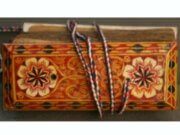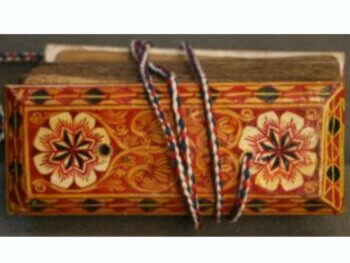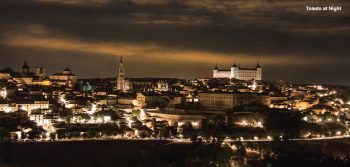
ANOKHI’s Home & Travel editor, Geeta Wahab, took a once-in-a-lifetime trip to relish in the history, the food and the soaring spirit of five historic Spanish cities.
The sights, culture, arts, history and life of Spain were buzzing around us as we weaved through five of the country’s UNESCO World Heritage sites. Each city, steeped in history, culture and stories, made experiencing Spain for the first time an unforgettable experience.
Though each city has its own energy, there are certain things that bind the country together. Like their bold displays of religion and faith during Holy Week, celebrated in April. Everything shuts down and the people pay homage to their saviour with hour-long processions and parades. An ethereal blending of the Christian, Muslim and Jewish faiths apparent in the buildings, the architecture and how the cities are organized show that many years ago they lived in harmony within very close quarters and often supported each other.
Another thing you’ll see throughout the country are storks. A protected species in Spain, you’ll find these large birds perched atop towers, even within the cities. The birds build their nests, which weigh anywhere from 300 to 500 kilograms, on top of these towers and migrate back to the same nests every year to lay their eggs. Their impressive size and wingspans are accented by the colour of their feathers and they are gorgeous to look at. The most widely seen is the white stork, that’s mostly white with black feathers along the edges of their wings and a long citron-hued beak. If you’re lucky, you’ll spot the very rare black stork, which is mostly black with white feathers on the underbody.
First Stop: Toledo, The Art Stop
After a 13-hour flight and a brief car ride, I stood in my room taking in the breathtaking panoramic view and admiring the old buildings that hold the secrets of this city that is lovely in the day and even more stunning when it is lit up at night. Venturing into town, one of the must-see sites is the Museum of Santa Cruz, the home of El Greco, a famous artist from Toledo who was commissioned by many dignitaries to create paintings depicting their holiness. The building itself is a piece of art. The same goes for all the other must-see sites like the Holy Cathedral of Toledo, the Santa María la Blanca and the Puente de San Martín.
Traveller’s tidbit: In the fantasy and science fiction world, Toledo is known as the place that produces unshatterable swords by being dipped in the Tagus River, giving the holder unfaltering protection. So think back to all those novels and movies and, chances are, if there was a special place to visit for swords and weaponry, it was Toledo.
Second Stop: Cáceres, The Cultural Hub
Strolling through the cobblestone streets of this city tucked away on a hillside, you get lost in a world of old buildings, churches and cathedrals and transported to a time centuries ago. Cáceres gives you a glimpse into the rural life in this city hundreds of years ago by maintaining old buildings and sites like the Plaza de San Jorge and the Plaza de Santa María. The architecture is so well-preserved that the details in the structures are mostly still visible today. The Arab Cistern, for example, is still intact and collects water and although it is unusable, it is a lovely tourist attraction with traditional Middle Eastern influenced arches.
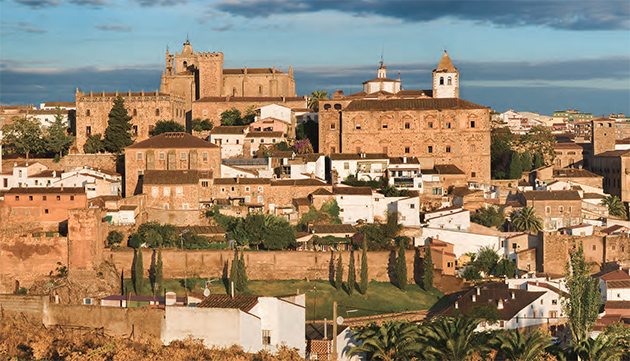
Cáceres Skyline
Traveller’s tidbit: Storks aren't the only big birds roaming these streets, there’s the neighbourhood peacock which is often spotted on top of buildings.
Third Stop: Mérida, The Historic Place
The ruins in this historic Spanish city take you to another time. Imagine walking onto an old roman stage or onto the grounds where fights were held for entertainment. Or imagine taking in a show at an ancient theatre. Well, you can do exactly that at the Roman Theatre ruins in Mérida. The structure stands overlooking a beautiful, lush garden. Events and concerts are held both in the gardens and in the theatre ruins on a regular basis for a truly authentic experience. The Alcazaba, the Temple of Diana and the Roman Bridge are more sites that add to the historical essence of Mérida. The Milagros Roman Aqueduct still stands, in great shape, towering above the ground and showing off the expertise of builders so many years ago. If you still haven’t had enough of roman ruins, visit the National Museum of Roman Art which houses some of the better-preserved mosaics, statues, coins and artifacts.
Traveller’s tidbit: If you don't get creeped out easily, visit the ancient burial ground at the National Museum of Roman Art.
Fourth Stop: Córdoba, The Nature Stop
Córdoba is an incredibly beautiful city where you’ll find a culmination of art, culture, religion and architecture. The Mezquita, the mosque cathedral, is an impressive building with stunning architecture and a lovely courtyard and tower. Decades after the mosque was built and the Muslims migrated, an architect was commissioned to build a decadent cathedral within the walls of the mosque, and it’s still used today. Plant and garden enthusiasts will have a lot to do in this city. The Palacio Museo de Viana takes part in the Patio Festival, an annual festival in May that celebrates gardens by opening up the gardens, courtyards and patios of several local houses, restaurants and attractions for anyone to visit and admire.
Traveller’s tidbit: Córdoba is known for the Andalusian horse and you can see them trot, show off and even dance as part of an equestrian show.
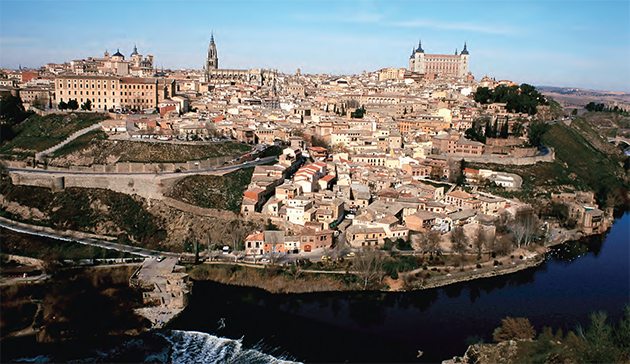
Panorama of Toledo
Fifth Stop: Alcalá de Henares, The Literary Hot Spot
A drama and literature fan, like myself, will appreciate the significance of this city and the influence it has had on generations of writers. Still in immaculate shape, the Corral de comedias de Alcalá de Henares Theatre is one of the city’s original theatres that housed stage plays. The theatre still hosts regular shows and is a must-see for drama buffs. Alcalá de Henares is also the birthplace and hometown of Miguel de Cervantes, author of Don Quixote. You can visit the home he was born in and grew up in, now the Cervantes Birthplace Museum, as well as the basin he was baptized in.
Traveller’s tidbit: At the University of Alcalá, students would have to propose their master’s thesis in front of a group of dignitaries, school administration and their peers who would judge whether it was a sound idea to study.
The Paradores Hotels and Gastronomy
Restored palaces, nunneries or old buildings strongly tied to the city, and just steps away from the most exciting parts of the city, the Paradores Hotels were part of the attraction. Stylish, comfortable and welcoming they offer everything you’d expect from a 5-star accommodation. Just don't forget your international outlet converter. Although, the front desk will be more than happy to help you get adjusted, find a guide and get acquainted with the city.
Dishes served at the Paradores restaurants are made from local produce and include many local specialties. Wines served are the regional varietals and are married perfectly with the dishes. Spain is renowned for its tapas, a course of several small dishes, each with its own flavour palette, starting with an appetizer and finishing with dessert. Spaniards have dinner between 9 and 11 pm and tapas is ideal for post-work bar hopping — you stop at a few places and get something small to eat at each place. You don't fill up at one place but by the end of the night you’re satisfied.
One of the most popular local delicacies is Iberian ham. It accompanies the appetizer alongside a selection of local cheeses and breads. The seafood is also noteworthy. Fresh and tender, the fish, prawns and baby squid melt in your mouth. Spain is also famous for their olives. Each year the management of the Paradores get together and select local olive oils that the hotel chain will highlight in their dining rooms. Each type is from a different region and this truly exemplifies how proud they are of Spain’s rich land and natural resources.
Aside from the incredible places, people and sights, one of my fondest memories of these cities is the scent. Seville orange trees lined the streets and as the fruit ripened, they gave off the beautiful, soft and fresh scent of orange blossoms.
Special thanks to Tourspain, the guides, the restaurants and the Paradores.
BY GEETA WAHAB
Photography courtesy of CARLOS CRIADO (CÁCERES SKYLINE); AGUSTÍN PUIG (PANORAMA OF TOLEDO, TOLEDO AT NIGHT); TOURSPAIN (ALL OTHER IMAGES)
PUBLISHED IN THE HEALTH & WELLNESS ISSUE/SUMMER 2014
Geeta Wahab
Author
Cultivating a life she loves, Geeta (@geets.suites) is chasing all her passions, including her love for home décor. As a brand new home owner, her current journey has launched her further into that world - check out her Instagram @geets.suites for tidbits of her story and other decorating pieces. A...
COMMENTS
YOU MAY ALSO LIKE
Newsletter Sign Up
Subscribe to our FREE newsletter for all of the latest news, articles, and videos delivered directly to your inbox each day!




